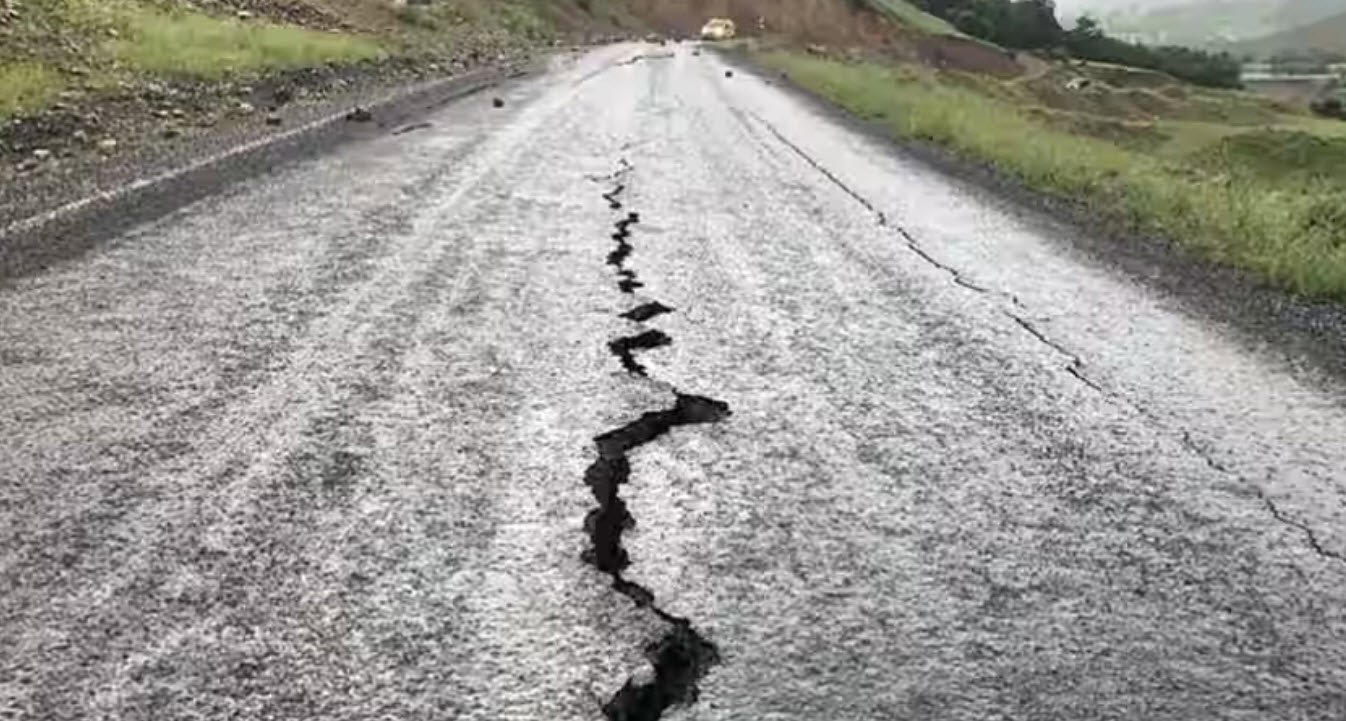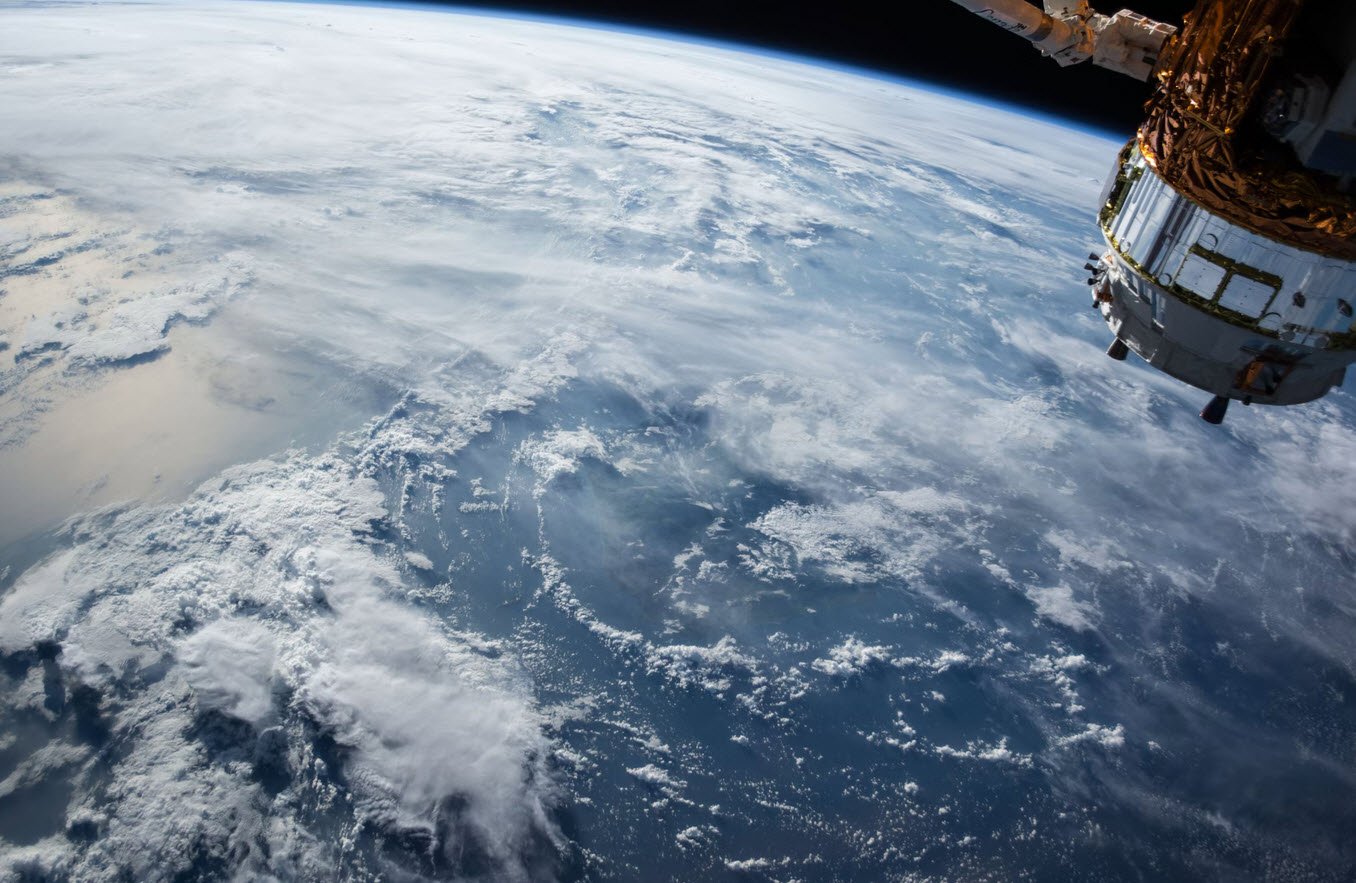
This subject (Global Warming and Environmental Pollution) can be overwhelming and the science complicated. In addition, predictions about the future of the planet often include endless warnings and signs.
The accumulated heat in the oceans reached a new record in 2021 even during Covid-19 Pandemic. The rise in temperature of the seas is one of the best ways to quantify global warming, which is “unambiguous”.
We understand.
In this article we are giving 100 MCQ Questions and Answers on the Global Warming and Environmental Pollution which strengthen the knowledge of aspirants who are preparing for the examinations like UPSC, SSC, SBI, Railways etc.
Suggested Read:
- [World] Major Companies & Their Founders
- List of Important Scientific Instruments
- Top 50 Important Inventions and Discoveries
- [Science] 20 Fundamental Physics Formulas You Need To Remember
This is why, we have put together a list of 100 Multiple Choice Questions with Answers about climate change and environmental pollution:
1. Smog is produced due to
- Air and metal dust
- Water and nitrogen oxide
- Smoke and fog
- None of these
2. The photochemical smog is formed by
- Nitrogen oxides
- Hydrocarbons
- Nitrogen oxides and hydrocarbons
- Solar radiations upon nitrogen oxides and hydrocarbons
3. In metropolitan cities the automobiles cause air pollution
- 80%
- 60%
- 50%
- 100%
4. Ozone depletion shall cause higher incidence of
- Skin cancers
- Cataract
- Decreased immunity
- All the above
5. Most harmful type of environmental pollutants are
- Human organic wastes
- Natural nutrients in excess
- Waste animal feed
- Non-biodegredable chemicals
6. Jet aeroplane releases pollutants in air called
- Smog
- Photo-chemical oxidants
- Aerosols
- Algae and bacteria
7. Spraying DDT on crops shall produce pollution of
- Air and water
- Air and soil
- Crops and air
- Soil and water
8. Among pollutants which has the most lasting effect?
- Carbon monoxide
- Pesticides
- Sulphur dioxide
- Smoke from chimneys
9. Lead pollution in Indian cities had been mainly due to
- Lead pencils
- Batteries
- Automobiles
- Electronic gadgets
10. Pollutant likely to deplete ozone layer is
- CO
- Nitrogen oxides
- Cholorofluorocarbons
- Both (b) and (c)
11. Acid rain is caused by
- Excess production of coal gas
- Excess release of CO2 due to increasing combustion and respiration
- Excess release of SO2 and NO2 from burning fossil fuels
- Excess production of gaseous hydrocarbons.
12. The physical and biological world where one lives is called:
- Environment
- Atmosphere
- Elithosphere
- None of these
13. What is the vital factor which makes the environment different in different regions?
- Effect of atmosphere
- Effect of human activity
- Effect of ozone layer
- None of these
14. Name the gas present in the atmosphere at a height between 50 to 60 km:
- Oxygen
- Ozone
- Hydrogen
- Nitrogen
15. Chief air pollutant which is likely to deplete ozone layer is
- Sulphur dioxide
- Carbon dioxide
- Carbon monoxide
- Nitrogen oxides and fluorocarbons.
16. Name the main agent which causes pollution:
- Man
- Animals
- Sea animals
- Nitrogen
17. Non-biodegradable waste is:
- Polythene
- Radioactive waste
- Plastic
- All of these
18. Above ozone layer there is present a layer of ions which emit:
- X-rays
- Infra-red rays
- Radiowaves
- None of these
19. Air and water pollution is caused by:
- Radioactive wastes
- Industrial wastes
- Radio active substances
- None of these
20. Man is:
- Omnivorous
- Herbivorous
- Carnivorous
- None of these
21. Global warming will cause
- Rise in level of oceans
- Decrease in glaciers
- Reduction in ice caps
- All the above
22. Two constituents of abiotic environment are:
- Oxygen and Nitrogen
- Air and water
- Water and Nitrogen
- Land and Oxygen
23. The wastes which remain in soil and control be used are called:
- Bio-degradable wastes
- Non-biodegradable wastes
- Biomagnification
- None of these
24. Deforestation causes:
- Soil erosion
- Soil fertility
- Soil conservation
- None of these
25. Substance which absorbs UV-radiations coming from the sun is:
- Oxygen
- Water-Vapour
- Water gas
- Ozone
26. Soil is called fertile only:
- In presence of nitrogeneous compounds
- In presence of all the essential elements except nitrogenous compounds
- In presence of all the essential elements along with the earthworms
- In presence of earthworm only
27. Siliviculture is a programme pertaining to:
- Fishing
- Replenishing forests
- Collection of metals from the soil
- None of these
28. Free oxygen in the atmosphere comes from:
- Decomposition of water vapours
- Decomposition of oxides
- The plants during photosynthesis
- None of these
29. Atmosphere extends:
- Upto 15 km
- From 15 km to 60 Km
- From earth level to 60 km
- More than 60 km
30. Loud noise causes
- Irritation
- Irrationality
- Impairment of hearing
- Dilation of blood vessels
31. Pollution increases:
- Arithmetically
- Geometrically
- Numerically
- None of these
32. Which of the following do not cause pollution:
- Water
- Noise
- Air
- All cause pollution
33. Plants and animals constitute:
- Biotic environment
- Basic environment
- Biological magnification
- None of these
34. The water level present underground is called:
- Water table
- Water level
- Spring level
- None of these
35. Supersonic jets cause pollution by thinning of
- Sulphur dioxide layer
- Carbon dioxide layer
- Ozone layer
- All the above
36. A thin layer of oil on water is called:
- Oil slick
- Oil film
- Oilute
- None of these
37. Ecological imbalance in the world is created by:
- Conservation of forests
- Conservation of wild life
- Production of more paper
- Conservation of water and soil
38. Pollution is
- Removal of top soil
- Release of toxic/undesirable materials in environment
- Conservation of energy
- All the above
39. The pollutant which dissolves to form acid rain:
- Sulphur dioxide
- Carbon monoxide
- Nitrogen dioxide
- Both (a) and (b)
40. The depletion of ozone layer is due to the use of chemical such as:
- Fluorocarbon
- Chlorocarbon
- DDT
- Both (a) and (b)
41. Ultimate environment hazard to mankind is due to
- Nuclear pollution
- Water pollution
- Air pollution
- Noise pollution
42. An upset in the natural balance is due to:
- Ecological crisis
- Environmental temperature
- Environmental pressure
- None of these
43. An example of non-biodegradable waste is:
- Paper
- Cow dung
- Plastic
- None of these
44. Most dangerous pollution is caused by:
- Air
- Chemicals
- Noise
- Radioactive substances
45. Which of the following is biodegradable?
- Paper
- Aluminium bags
- DDT
- Plastic
46. Greenhouse gases are
- Absorbers of long-wave radiations from earth
- Transparent to both solar radiations and long-wave radiations from earth
- Absorbers of solar radiations for warming the atmosphere of earth
- Transparent to emissions from earth for passage into outer space.
47. Cutting of tree for various purposes is called:
- Deforestation
- Transpiration
- Monoculture
- Afforestation
48. Growing of same crops on same soil year after year is:
- Crop rotation
- Crop monoculture
- Silviculture
- None of these
49. The study of relationship of living things to each other and their environment is called:
- Ecology
- Psychology
- Zoology
- None of these
50. The meteriological factors are:
- Sunlight, temperature, rainfall
- Oxygen and Nitrogen
- Storm and sea waves
- None of these
51. Gas being produced by paddy fields and involved in global warming is
- Chlorine
- Methane
- CO2
- H2S
52. Herbicides, algacides, rodencides, fumigants etc are called:
- Biocides
- Pesticides
- Insecticides
- Fungicides
53. Air pollutants enter the body through:
- The respiratory system
- The digestive system
- the excretory system
- All of the above
54. Air pollution is not caused by
- Pollen grains
- Hydroelectric power
- Industries
- Automobiles
55. The sources which are prepared in many years and cannot be made easily are called:
- Renewable
- Inconsistent
- Non-renewable
- All of these
56. The example of renewable resource is:
- Natural Gas
- Gobar Gas
- Uranium
- None of these
57. Increased asthmatic attacks in certain seasons are related to
- Inhalation of seasonal pollen
- Eating of seasonal vegetables
- Low temperature
- Wet and dry environment
58. What we should do to meet energy crisis?
- Use coal
- Use natural gas
- Use uranium
- Use solar energy
59. Biodegradable pollutant is
- Plastic
- Asbestos
- Sewage
- Mercury
60. Minamata disease is due to pollutant
- Lead
- Mercury
- Hydrogen sulphide
- Sulphur dioxide
61. Gas released during Bhopal tragedy was
- Methyl isocyanate
- Potassium isothiocyanate
- Sodium isothiocyanate
- Ethyl isothiocyanate
62. Forests are helpful due to their:
- Control over pollution
- Control over water
- Control over gases
- Control over wood
63. Of the following gases, tell which one suffocates living beings to death?
- Carbon dioxide
- Carbon monoxide
- Nitrogen dioxide
- Sulphur dioxide
64. Acid rain will not affect
- Lithosphere
- Plants
- Ozone layer
- Animals
65. Spraying of DDT produces pollution of
- Air
- Air and Water
- Air and Soil
- Air, Water and Soil
66. The poisonous gas, in the exhaust gases emoitted by a vehicle, which hinders the activity of haemoglobin is:
- So2
- CO
- No2
- Co2
67. Pulmonary oedema is caused by
- Sulphur oxides
- Carbon oxides
- Nitrogen oxides
- Hydrocarbons
68. Conservation of wild animals in necessary because:
- it keeps the ecological balance
- they consume of crops
- they do not pollute
- none of these
69. Of the following metals, tell which one causes systemic poisoning in man?
- Zinc
- Manganese
- Selanium
- Lead
70. Silicosis occurs due to
- Acid rain
- Ozonel depletion
- Inhalation of aerosols
- Inhalation of So2
71. Which is affected by taking alcohol?
- Heart
- Liver
- Lungs
- Kidneys
72. Which factors affect health?
- Intrinsic and extrinsic
- Atmosphere
- Alcohol
- None of these
73. Name the disease caused by virus:
- AIDS
- Syphlilis
- Maleria
- Cold
74. Air and water pollution are interconnected through
- Smog
- Acid rain
- Aerosols
- Radioactive pollution
75. What is it that smoking produces in the largest amount?
- Nitrogen oxide
- Carbon monoxide
- Particulate matter
- Carbon dioxide
76. Narcotic drug is:
- Tobaco
- tea
- Morphine
- None of these
77. Tobacco contains:
- Morphine
- Nicotine
- LSD
- All these
78. Excessive pesticides pollute:
- Lithosphere
- Biosphere
- Atmosphere
- None of these
79. Which one of the following diseases are sexually transmitted
- Gonorrhoea
- Syphills
- AIDS
- All of these
80. Which gas contributes most to greenhouse effect?
- CFC
- Feron
- Co2
- CH4
81. The chemicals or radiations whose presence causes pollution are called:
- Pollutants
- Pollution
- Atmosphere
- None of these
82. Contamination of water is caused by:
- Roughage
- Industrial wastes
- Industry
- None of these
83. DDT is
- Greenhouse gas
- Degradable pollutant
- Non degredable pollutant
- None of above
84. Air pollution is maximum i
- Sewage and pesticides
- Sewage and effluents
- Detergents and pesticides
- Automobile exhausts and chemicals from industries
85. AIDS is caused by:
- Malarial Parasite
- Virus
- Rabies
- None of these
86. Chemical pollution is caused by:
- Chemical wastes from industries
- Insecticides
- Rodents
- None of these
87. Some common Pesticides:
- DDT and BHC
- Blue Vitriol
- Potassium Nitrate
- None of these
88. Which gas is more toxic:
- Carbon monoxide
- Carbon dioxide
- Oxygen
- Nitrogen
89. Which one is caused by the uncontrolled growth of tissues?
- Cancer
- AIDS
- Syphilis
- None of these
90. The dangerous diseases for which no cure has been found.
- Malaria, Tuberculosis
- Cancer and AIDS
- Beri Beri & Kalazar
- None of these
91. Alcohol ______ the alertness of mind:
- Reduces
- Increases
- (a) and (b) both
- None of these
92. The unit of intensity of noise is:
- Decibel
- Decimal
- Debey
- Dioptre
93. Ozone is:
- o
- o2
- o3
- o4
94. o3 is formed in stratosphere at height of:
- 16-23 km
- 10-15 km
- 50-60 km
- 60-70 km
95. Which part of solar radiation is absorbed by ozone layer:
- Ultraviolet
- Infrared
- Visible
- All of these
96. Ultraviolet rays cause:
- AIDS
- Skin cancer
- T.B.
- Small pox
97. In atmosphere, Ozone is prepared with the effect of sun rays from:
- Co2
- o2
- n2
- Water vapours
98. Carbon monoxide, emitted by automobiles, prevents transport of oxygen in body due to
- Combining with oxygen to form carbon dioxide
- Destruction of haemoglobin
- Preventing reaction between oxygen and haemoglobin
- Forming stable compound with haemoglobin
99. Due to greenhouse effect, temperature of earth is:
- Rising
- Falling
- Remaining same
- None
100. Greenhouse effect can be minimised by:
- Pisciculture
- Agriculture
- Silviculture
- All these three








